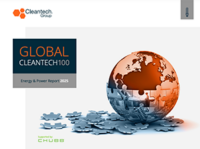Energy & Power Key Takeaways – Cleantech Forum Asia
For three days, Cleantech Forum Asia hosted local, regional and international players in the energy sector. Here are some key takeaways from the energy sessions at the online event.
Clean Energy Molecules – Now is the time to establish lead markets, and expect a portfolio of molecules in 2050
Countries around Asia Pacific are beginning to mobilize around clean hydrogen and ammonia with the region expected to see the development of clean fuel trade flows much sooner and at a much bigger scale than expected. Countries such as Australia, through the 26GW Asian Renewable Energy Hub plan to become a global exporter, while others such as South Korea plan to become major importers (as can be seen with SK Groups $16.4 billion plan to create a domestic hydrogen infrastructure ecosystem). In 2021, it will be vital to establish early lead markets through consortiums in order to share the early-mover capital burden and to start incentivising a build-up of supply. From ammonia, hydrogen to methanol, the market forecasts projected for 2050 means no one molecule will win out, and will be dependent on location, scale or availability of low-cost renewables.
Will You Join Us At The Next Forum?
Energy Access in Asia is all about local partnerships
The energy access market is as vibrant as it has ever been. From the early days of lighting equipment, the market is now awash with solar home systems, microgrids providers, financers and middleware solutions providers. It’s exciting to see the force behind the efforts to progress Sustainable Development Goal (SDG) 7, which targets universal, sustainable energy access by 2030. However, what still remains absolutely vital is identifying and working with local community partners on the ground early on in the business development cycle. Companies like Okra Solar, Village Energy and Straw Innovations all have proven that to build a product which is suited to the market, working with local governments, community stakeholders and end-consumers works.
Automation AI is going to eat traditional software
AI start-ups are now active access all parts of the energy system, from asset development, infrastructure, DERs, markets and customers. Software now plays a vital role in the future energy system globally, but AI is going to replace all off-the-shelf software tools used in the market today. Utilities have targeted many of the low-hanging fruit for AI in energy, from renewable maintenance to robotic process optimization. Now, we are seeing confidence to use prescriptive control AI across renewables and energy networks. In addition, changing regulation across Asia now means peer-to-peer trading is transitioning past pilot stages, and can be considered commercially. One particular project that caught my attention during the event was Power Ledger’ Peer-to-Beer exchange program with Carlton United Breweries’ Victoria Bitter, which allows participants to exchange credit on their power bill — obtained from generating excess solar at home for beer!



